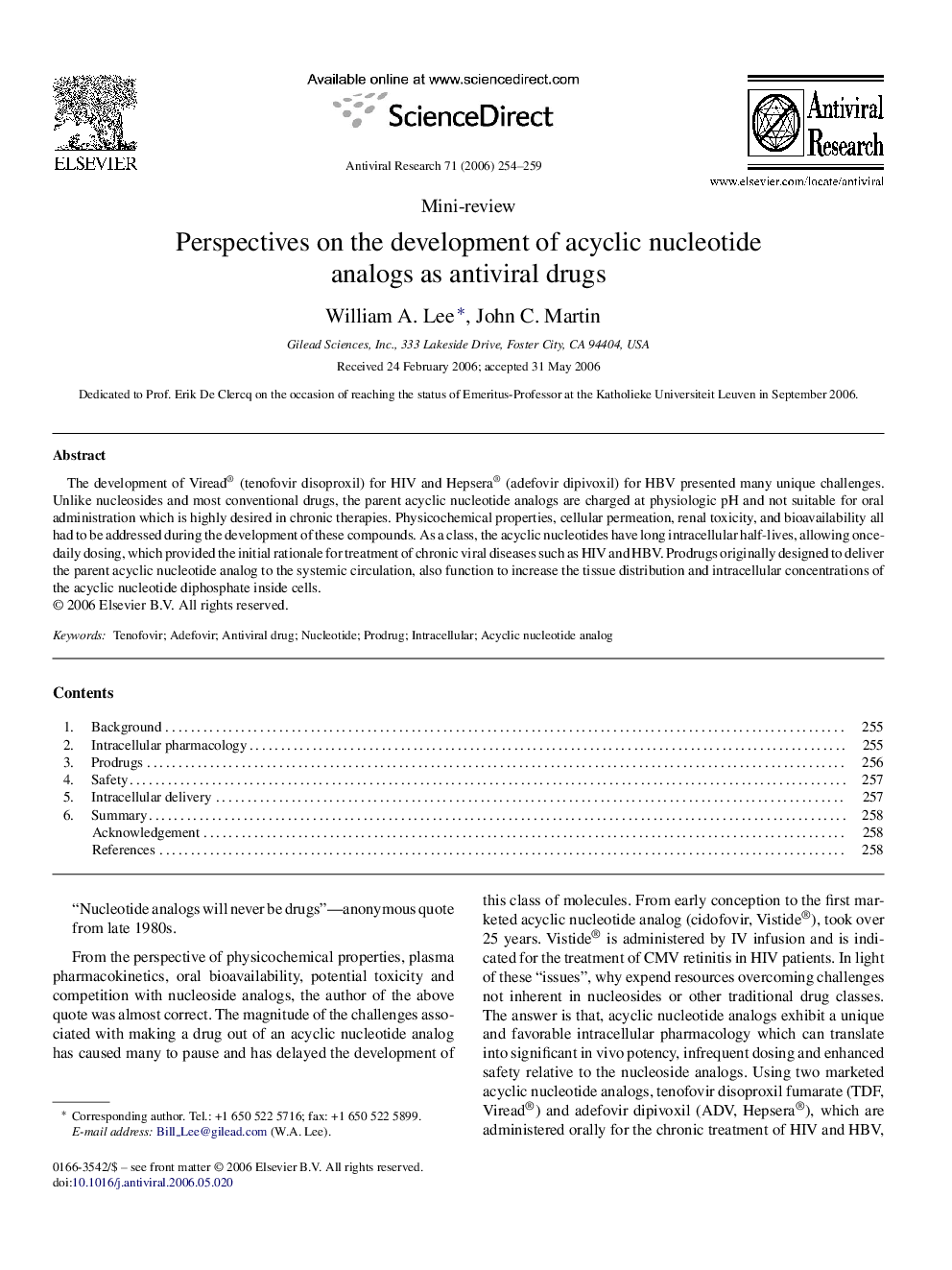| Article ID | Journal | Published Year | Pages | File Type |
|---|---|---|---|---|
| 2511554 | Antiviral Research | 2006 | 6 Pages |
The development of Viread® (tenofovir disoproxil) for HIV and Hepsera® (adefovir dipivoxil) for HBV presented many unique challenges. Unlike nucleosides and most conventional drugs, the parent acyclic nucleotide analogs are charged at physiologic pH and not suitable for oral administration which is highly desired in chronic therapies. Physicochemical properties, cellular permeation, renal toxicity, and bioavailability all had to be addressed during the development of these compounds. As a class, the acyclic nucleotides have long intracellular half-lives, allowing once-daily dosing, which provided the initial rationale for treatment of chronic viral diseases such as HIV and HBV. Prodrugs originally designed to deliver the parent acyclic nucleotide analog to the systemic circulation, also function to increase the tissue distribution and intracellular concentrations of the acyclic nucleotide diphosphate inside cells.
